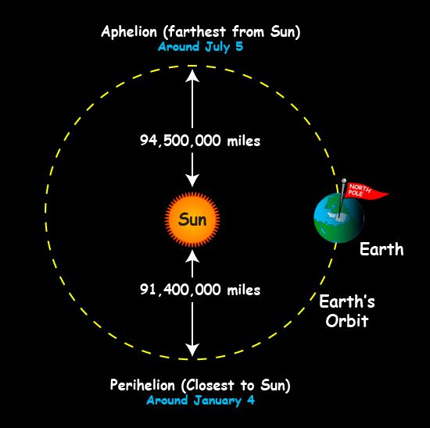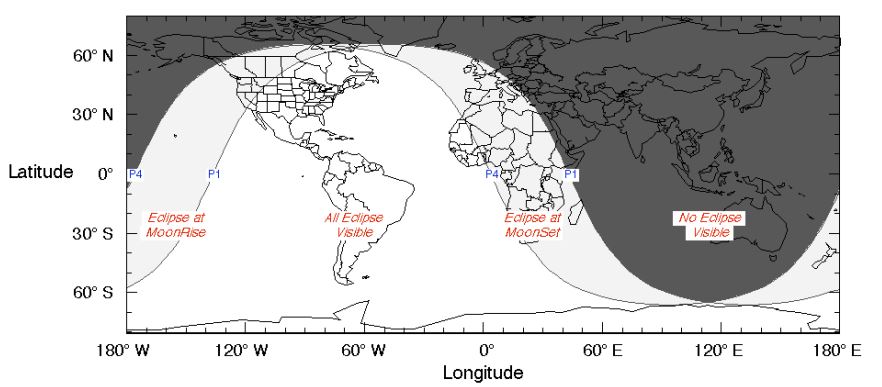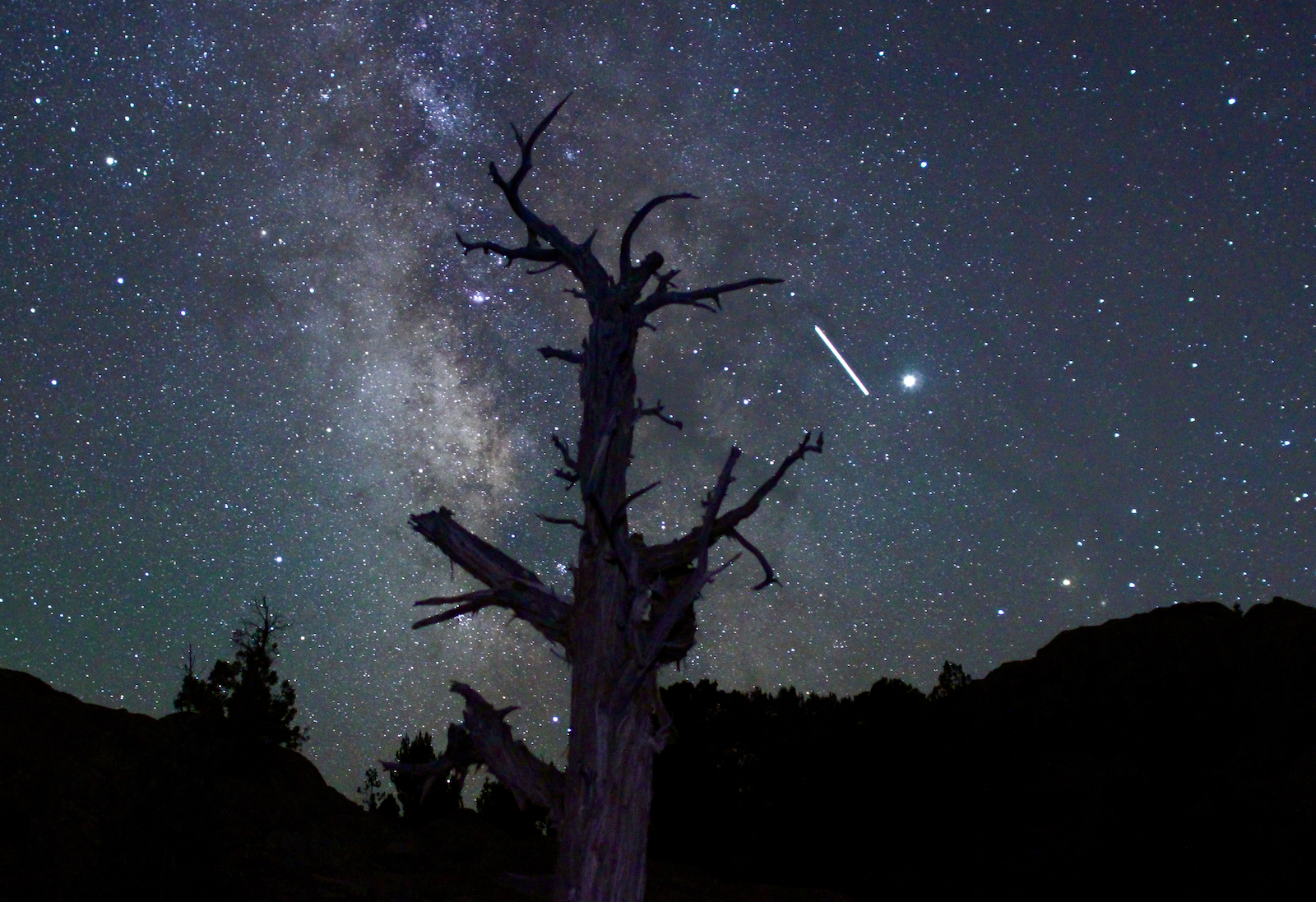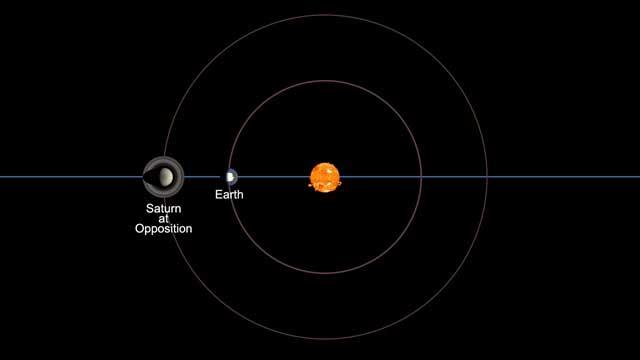Astronomical Events in July
Special Stories
2 Jul 2020 5:01 AM
If you're bummed out over cancelled fireworks shows this 4th of July, don't worry, space has your back!
The peak of the summer star gazing season is nearly upon us (we're looking at you, Perseid meteor shower) and it's a great time to get outside and stare at stars, planets, and all that space between.
NASA even has its next mission to Mars scheduled to launch near the end of the month and you won't even have to leave your couch to watch it.
Don't forget, you can always track the International Space Station to watch it fly over your area and if this list isn't enough to appease your celestial appetite, check out EarthSky's tonight feature on their website.
Happy viewing!
 Image credit: NASA
The Earth reaches aphelion on July 4th, the most distant point from the sun in its slightly elliptical orbit. That's right, the Earth's orbit is not a perfect circle, but it's pretty close.
The Earth's average distance from the sun is about 93 million miles, but at aphelion, it's around 94.5 million miles away. During Perihelion in early January, the Earth is approximately 91.4 million miles from the sun. This means the Earth is farthest from the sun during the summer in the Northern Hemisphere.
If you want to celebrate aphelion at the exact moment it occurs (of course you want to do that), you'll likely have to do it over coffee, especially if you're on the West Coast of the United States.
Aphelion time is 11:35 UTC, which is 7:35 EDT.
Image credit: NASA
The Earth reaches aphelion on July 4th, the most distant point from the sun in its slightly elliptical orbit. That's right, the Earth's orbit is not a perfect circle, but it's pretty close.
The Earth's average distance from the sun is about 93 million miles, but at aphelion, it's around 94.5 million miles away. During Perihelion in early January, the Earth is approximately 91.4 million miles from the sun. This means the Earth is farthest from the sun during the summer in the Northern Hemisphere.
If you want to celebrate aphelion at the exact moment it occurs (of course you want to do that), you'll likely have to do it over coffee, especially if you're on the West Coast of the United States.
Aphelion time is 11:35 UTC, which is 7:35 EDT.
 Image credit: NASA
This slight eclipse will be visible throughout most of the America's but will be ending as the moon rises for some residents on the West Coast of the United States and Canada.
What may be more interesting to watch will be the moon and its close appearance to both Saturn and Jupiter, both of which reach opposition during the month of July making them appear quite bright.
Image credit: NASA
This slight eclipse will be visible throughout most of the America's but will be ending as the moon rises for some residents on the West Coast of the United States and Canada.
What may be more interesting to watch will be the moon and its close appearance to both Saturn and Jupiter, both of which reach opposition during the month of July making them appear quite bright.
 Jupiter is very bright in the September sky near the Milky Way and the streaking International Space Station. Source: NASA/Bill Dunford
The Earth flies between the Sun and Jupiter on the night of July 13th-14th, which will make Jupiter appear very bright; 4th only to the sun, moon, and Venus!
This is known as opposition and occurs about every 13 months. Jupiter reaches opposition around 4 a.m. EDT, but will be visible the entire night thanks to its alignment. Jupiter reached its closest point to earth on June 15th.
Look for the biggest planet in our solar system in the east after sundown, overhead at midnight, and near the western horizon at sunrise.
Jupiter is very bright in the September sky near the Milky Way and the streaking International Space Station. Source: NASA/Bill Dunford
The Earth flies between the Sun and Jupiter on the night of July 13th-14th, which will make Jupiter appear very bright; 4th only to the sun, moon, and Venus!
This is known as opposition and occurs about every 13 months. Jupiter reaches opposition around 4 a.m. EDT, but will be visible the entire night thanks to its alignment. Jupiter reached its closest point to earth on June 15th.
Look for the biggest planet in our solar system in the east after sundown, overhead at midnight, and near the western horizon at sunrise.
 Jupiter isn't the only gas giant showing off in our night sky during the month of July. In fact, Saturn reaches opposition less than a week after Jupiter!
Saturn's opposition occurs at about 6 p.m. EDT, but that's not all, folks! Just five hours later, Saturn will be the closest to Earth it gets all year. Throw in a new moon on this night and conditions don't get much better for viewing this ring and moon-laden planet.
Saturn will be visible all night, rising in the east after sunset and setting in the west around dawn. You'll need a telescope to see the planet's rings, but it will be quite visible to the naked eye with its lovely golden glow.
Jupiter isn't the only gas giant showing off in our night sky during the month of July. In fact, Saturn reaches opposition less than a week after Jupiter!
Saturn's opposition occurs at about 6 p.m. EDT, but that's not all, folks! Just five hours later, Saturn will be the closest to Earth it gets all year. Throw in a new moon on this night and conditions don't get much better for viewing this ring and moon-laden planet.
Saturn will be visible all night, rising in the east after sunset and setting in the west around dawn. You'll need a telescope to see the planet's rings, but it will be quite visible to the naked eye with its lovely golden glow.
July 4th: Aphelion
 Image credit: NASA
The Earth reaches aphelion on July 4th, the most distant point from the sun in its slightly elliptical orbit. That's right, the Earth's orbit is not a perfect circle, but it's pretty close.
The Earth's average distance from the sun is about 93 million miles, but at aphelion, it's around 94.5 million miles away. During Perihelion in early January, the Earth is approximately 91.4 million miles from the sun. This means the Earth is farthest from the sun during the summer in the Northern Hemisphere.
If you want to celebrate aphelion at the exact moment it occurs (of course you want to do that), you'll likely have to do it over coffee, especially if you're on the West Coast of the United States.
Aphelion time is 11:35 UTC, which is 7:35 EDT.
Image credit: NASA
The Earth reaches aphelion on July 4th, the most distant point from the sun in its slightly elliptical orbit. That's right, the Earth's orbit is not a perfect circle, but it's pretty close.
The Earth's average distance from the sun is about 93 million miles, but at aphelion, it's around 94.5 million miles away. During Perihelion in early January, the Earth is approximately 91.4 million miles from the sun. This means the Earth is farthest from the sun during the summer in the Northern Hemisphere.
If you want to celebrate aphelion at the exact moment it occurs (of course you want to do that), you'll likely have to do it over coffee, especially if you're on the West Coast of the United States.
Aphelion time is 11:35 UTC, which is 7:35 EDT.
July 4-5: Full Moon and Penumbral Lunar Eclipse
The moon will be big and bright when Independence Day is celebrated across the United States. Well, maybe not as bright as normal. When the July moon (a.k.a. the Buck Moon) is full, it will also pass through a piece of Earth's outer shadow, known as the penumbra. This will slightly darken one side of the moon, instead of giving it the deep red filter of a total eclipse when it passes through the umbra, the darkest part of earth's shadow. Image credit: NASA
This slight eclipse will be visible throughout most of the America's but will be ending as the moon rises for some residents on the West Coast of the United States and Canada.
What may be more interesting to watch will be the moon and its close appearance to both Saturn and Jupiter, both of which reach opposition during the month of July making them appear quite bright.
Image credit: NASA
This slight eclipse will be visible throughout most of the America's but will be ending as the moon rises for some residents on the West Coast of the United States and Canada.
What may be more interesting to watch will be the moon and its close appearance to both Saturn and Jupiter, both of which reach opposition during the month of July making them appear quite bright.
July 10: Venus is "full" and bright
The moon is not the only celestial body with phases. In fact, since Venus and Mercury both orbit the sun inside of Earth's orbit, they appear to exhibit a full range of phases, very similar to the phases of the moon. Venus, the third brightest object in the night sky behind the sun and moon, reaches its "greatest illuminated extent" around July 10th, meaning viewers from earth will get a full view of this brilliant celestial object. It will be about as bright as it gets all year and will appear near the bright star of Aldebaran, the Eye of Taurus. The best time to see Venus is in the predawn or dawn hours in the Eastern Sky.July 10-12: The Moon and Mars Rise Together!
No, this is not an astronomical revolt. Mars and the Moon are going to hang out very close to each other in the eastern sky after midnight during the second weekend in July. You'll have to stay up late or get up early to see this dynamic duo. Look to the east after midnight or higher up in the predawn sky to find the moon. Mars will be the bright object nearby.July 13-14: Jupiter Shows Off
 Jupiter is very bright in the September sky near the Milky Way and the streaking International Space Station. Source: NASA/Bill Dunford
The Earth flies between the Sun and Jupiter on the night of July 13th-14th, which will make Jupiter appear very bright; 4th only to the sun, moon, and Venus!
This is known as opposition and occurs about every 13 months. Jupiter reaches opposition around 4 a.m. EDT, but will be visible the entire night thanks to its alignment. Jupiter reached its closest point to earth on June 15th.
Look for the biggest planet in our solar system in the east after sundown, overhead at midnight, and near the western horizon at sunrise.
Jupiter is very bright in the September sky near the Milky Way and the streaking International Space Station. Source: NASA/Bill Dunford
The Earth flies between the Sun and Jupiter on the night of July 13th-14th, which will make Jupiter appear very bright; 4th only to the sun, moon, and Venus!
This is known as opposition and occurs about every 13 months. Jupiter reaches opposition around 4 a.m. EDT, but will be visible the entire night thanks to its alignment. Jupiter reached its closest point to earth on June 15th.
Look for the biggest planet in our solar system in the east after sundown, overhead at midnight, and near the western horizon at sunrise.
July 20: Saturn at Opposition
 Jupiter isn't the only gas giant showing off in our night sky during the month of July. In fact, Saturn reaches opposition less than a week after Jupiter!
Saturn's opposition occurs at about 6 p.m. EDT, but that's not all, folks! Just five hours later, Saturn will be the closest to Earth it gets all year. Throw in a new moon on this night and conditions don't get much better for viewing this ring and moon-laden planet.
Saturn will be visible all night, rising in the east after sunset and setting in the west around dawn. You'll need a telescope to see the planet's rings, but it will be quite visible to the naked eye with its lovely golden glow.
Jupiter isn't the only gas giant showing off in our night sky during the month of July. In fact, Saturn reaches opposition less than a week after Jupiter!
Saturn's opposition occurs at about 6 p.m. EDT, but that's not all, folks! Just five hours later, Saturn will be the closest to Earth it gets all year. Throw in a new moon on this night and conditions don't get much better for viewing this ring and moon-laden planet.
Saturn will be visible all night, rising in the east after sunset and setting in the west around dawn. You'll need a telescope to see the planet's rings, but it will be quite visible to the naked eye with its lovely golden glow.
July 28: Delta Aquarid Meteor Shower
This may be less like a meteor "shower" and more like a meteor "drip." The Delta Aquarids are forecast to peak on the night of July 28th but, unlike the August Perseids, the Delta Aquarids have an elongated steady stream of meteors during late July and early August, instead of one big peak. You may be able to catch up to 10 meteors per hour, with the possibility of catching a few Perseids as well. Best viewing will be the days leading up to the peak on July 28th, due to the waxing crescent moon, which will leave predawn skies nice and dark! These shooting stars will appear to originate near the "Great Square of Pegasus" in the southern sky, but for the best chance to catch as many as possible, keep an unfixed gaze upon as much of the sky as possible away from light pollution.July 30: Mars 2020 Rover Heads to the Red Planet
A new robot, drone, and a slew of experiments will launch for Mars on July 30th, if all goes according to plan. The first day for the Rover's launch window was scheduled for July 22nd but had to be postponed by about a week. [embed]https://twitter.com/NASAPersevere/status/1278076794101329921[/embed] The rover, named Perseverance, will launch on an Atlas V-451 rocket from Launch Complex 41 at Cape Canaveral Air Force Station in Florida. It is scheduled to land in Mars' Jezero Crater in February of 2021 to begin its mission to look for signs of ancient microbial life. Perseverance will also attempt to characterize the planet's climate and geology, in addition to several other goals. It will also carry an experimental drone of sorts, known as the Mars Helicopter, which will test the first powered flights on the Red Planet.All Weather News
More